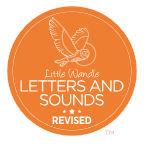

We are determined that every pupil will learn to read, regardless of their background or needs.
We use the ‘Little Wandle’ phonics scheme and have clear expectations of pupils’ phonics progress over each term. Daily phonics lessons begin as soon as children start their Reception year.
Within phonics sessions, children read books matched closely to their phonic knowledge, practise handwriting and spelling and write sentences from dictation.
Teachers give pupils plenty of time to practice reading and re-reading books that match the grapheme–phoneme correspondences they know, both at school and at home.
Pupils are assessed regularly and anyone falling behind the programme’s pace is provided with targeted support. This ensures that pupils are able to ‘keep up’ rather than ‘catch up’.
All teachers and support staff have completed Little Wandle phonics training to ensure sufficient expertise in the teaching of phonics and reading in all areas of school. We are consistent in our approach and the scheme is taught with fidelity.
Click here to view information for parents about Little Wandle.

Our reading curriculum ensures that pupils enjoy listening to and reading a wide range of stories, poems, rhymes and non-fiction, chosen to develop pupils’ vocabulary, language comprehension and a love of reading.
Reading is taught throughout school as a discrete subject as well as being an integral part of English and Copthorne Curriculum lessons. Lessons provide the opportunity for the class teacher to further develop children’s independent reading skills. They are designed to ensure that pupils develop both language comprehension and word reading skills to become confident readers. Children are also identified for individual support and intervention, such as daily 1 to 1 reading.
Children are encouraged to read a range of challenging texts and develop a love of reading. These texts make links to learning in other areas of the curriculum.